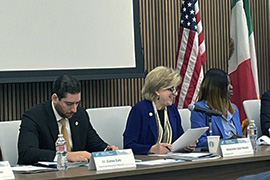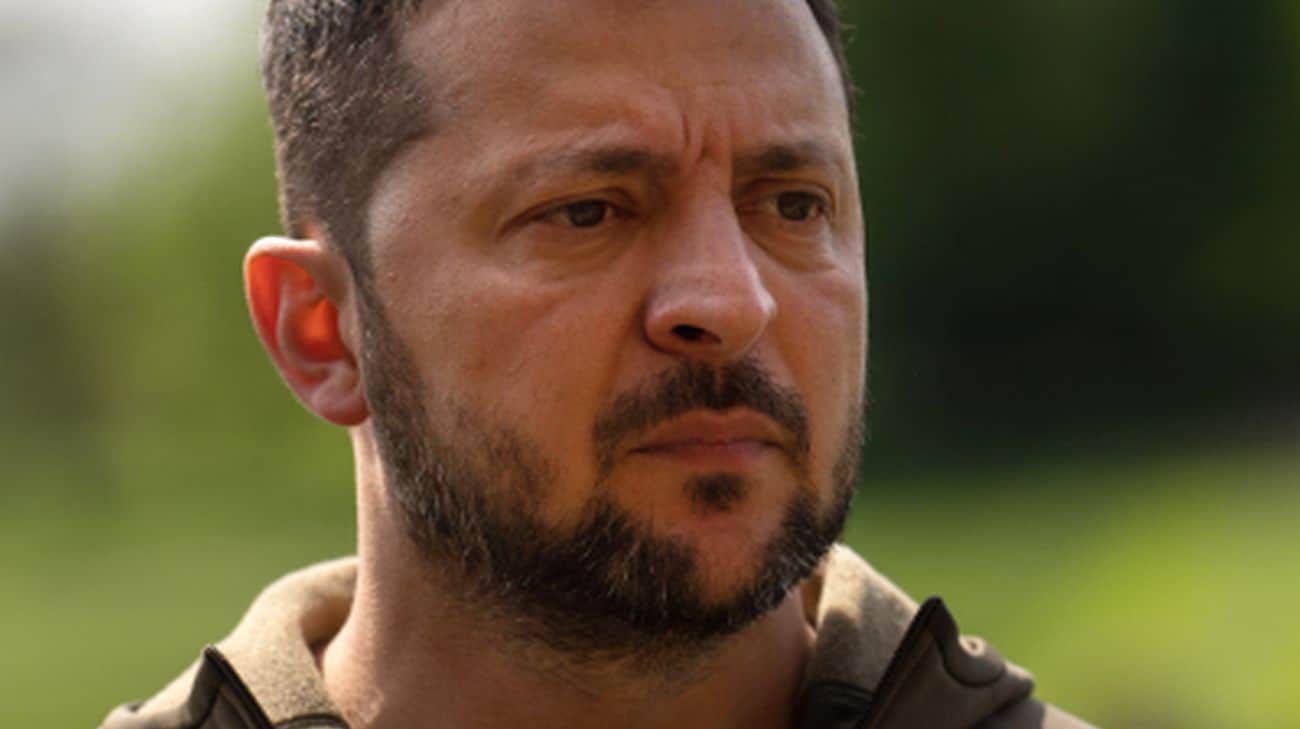Climate Change Is Turning Prisons Into Death Traps
Jessie Milo began serving a 200-year-plus prison sentence when he was 21 years old. During the summer of 2022, Cocroran State Prison, where he was housed, underwent a scheduled power outage. “While prisoners were locked in their cells, the ventilation was completely shut off in the housing units,” Milo said. “With no air flow, the temperature monitors in the cells showed 98 degrees.”As an elected member of the Inmate Advisory Counsel, which acts as a go-between for the incarcerated population and staff, Milo went from cell to cell, checking on the elderly population, in their 70s and 80s. “The old guys were getting lightheaded and sweating,” said Milo. “The guards wouldn’t even open their cell doors so they could get a little more air.”Milo now 43, feels he grew up behind bars, and sees prisons as communities that need to be “livable.” Right now, many prisons are failing that test: “It’s not equipped to handle the population without harming the health,” he said. “There’s black mold in the chow hall, leaky roofs, and during the summer months, without air conditioning, the housing units stay over 90 degrees.”When Milo asked the administration about repairs and upkeep of the prison, he says he was told that there were no plans for improvements, because there was no money in the budget for them. No matter the problem or emergency—including infectious diseases, such as colds, staphylococcus and norovirus—the problem is exacerbated by overcrowding.To find out how the incarcerated population feel about housing conditions and emergency preparedness, we teamed up with The Ella Baker Center for Human Rights and the University of California, Los Angeles to produce The Hidden Hazards Report.More than 2,200 surveys were sent to incarcerated people in 25 prisons. Their names came from EBC’s mailing list. Using both randomized selection and snowball sampling, the survey collected firsthand experiences and perceptions of more than 560 incarcerated people. The conclusion was that incarcerated Californians face life-threatening risks from wildfires, extreme temperatures, and flooding. The survey identified 18 prisons with about 46,000 incarcerated people at risk. The survey’s report shows that there is no mention in the state’s emergency plans to respond to climate emergencies in state prisons. The emergency plans do, however, make plans for “vulnerable populations.”“What’s most shocking to me is how even in cases where the prison did have an emergency plan, that plan was not followed during an emergency,” said Maura O’Neill, one of the UCLA researchers. “It appears that the normal reaction was to lock incarcerated people in their cells, which I believe increases their level of vulnerability.” The Hidden Hazards survey and report shows that prison officials have not prepared a course of action or even explored ways to reduce the harm that incarcerated people face as floods, extreme temperatures, and wildfires hit California prisons. As climate hazards are increasingly effecting prisons, officials persist in a reactive policy of “Don’t Look Up,” a movie in which a planet-killer comet is headed for earth. When top scientists inform government officials, their response is to ignore the bad news.As incarcerated journalists, Brooks and I find it troubling that prison officials provide state lawmakers with minimal information on the emergency preparedness of the state’s prisons. Evacuations are described in a limited way and procedures for fires, floods, and earthquakes are so narrow that it leaves questions on how prison officials will keep incarcerated people safe.Our concerns are rooted in prison officials’ long and extensive history of past failures—failures that cost people their lives. The most recent example was the 2020 Covid-19 outbreak at San Quentin where 28 incarcerated people and a corrections sergeant died. In 2011, with San Quentin’s population nearly doubled its design capacity, there was an outbreak of chickenpox. But instead of reducing the population to ease the disease’s ability to spread, a mitigation tactic was adopted: lock people in their cells, which is the same tactic to combat San Quentin’s annual influenza outbreak.In 2015, Legionnaires Disease found its way into a newly built healthcare facility building. The source: shoddy construction of a poorly maintained ventilation system. Though each incident could have served as a wakeup call, the warnings went unheeded and subsequent planning for the next emergency never materialized. With little accountability, there is little incentive for prison officials to proactively institute more humane policies rather than reacting to state directives in the wake of individual crises.To avoid the loss of life during these imminent dangers, the survey recommends cutting the incarcerated population in half. But closing prisons with a massive release would generate public outrage.The Hidden Hazards report does offer achievable solutions. Brooks and I believe adopting the

Jessie Milo began serving a 200-year-plus prison sentence when he was 21 years old. During the summer of 2022, Cocroran State Prison, where he was housed, underwent a scheduled power outage. “While prisoners were locked in their cells, the ventilation was completely shut off in the housing units,” Milo said. “With no air flow, the temperature monitors in the cells showed 98 degrees.”
As an elected member of the Inmate Advisory Counsel, which acts as a go-between for the incarcerated population and staff, Milo went from cell to cell, checking on the elderly population, in their 70s and 80s. “The old guys were getting lightheaded and sweating,” said Milo. “The guards wouldn’t even open their cell doors so they could get a little more air.”
Milo now 43, feels he grew up behind bars, and sees prisons as communities that need to be “livable.” Right now, many prisons are failing that test: “It’s not equipped to handle the population without harming the health,” he said. “There’s black mold in the chow hall, leaky roofs, and during the summer months, without air conditioning, the housing units stay over 90 degrees.”
When Milo asked the administration about repairs and upkeep of the prison, he says he was told that there were no plans for improvements, because there was no money in the budget for them. No matter the problem or emergency—including infectious diseases, such as colds, staphylococcus and norovirus—the problem is exacerbated by overcrowding.
To find out how the incarcerated population feel about housing conditions and emergency preparedness, we teamed up with The Ella Baker Center for Human Rights and the University of California, Los Angeles to produce The Hidden Hazards Report.
More than 2,200 surveys were sent to incarcerated people in 25 prisons. Their names came from EBC’s mailing list. Using both randomized selection and snowball sampling, the survey collected firsthand experiences and perceptions of more than 560 incarcerated people. The conclusion was that incarcerated Californians face life-threatening risks from wildfires, extreme temperatures, and flooding.
The survey identified 18 prisons with about 46,000 incarcerated people at risk. The survey’s report shows that there is no mention in the state’s emergency plans to respond to climate emergencies in state prisons. The emergency plans do, however, make plans for “vulnerable populations.”
“What’s most shocking to me is how even in cases where the prison did have an emergency plan, that plan was not followed during an emergency,” said Maura O’Neill, one of the UCLA researchers. “It appears that the normal reaction was to lock incarcerated people in their cells, which I believe increases their level of vulnerability.”
The Hidden Hazards survey and report shows that prison officials have not prepared a course of action or even explored ways to reduce the harm that incarcerated people face as floods, extreme temperatures, and wildfires hit California prisons. As climate hazards are increasingly effecting prisons, officials persist in a reactive policy of “Don’t Look Up,” a movie in which a planet-killer comet is headed for earth. When top scientists inform government officials, their response is to ignore the bad news.
As incarcerated journalists, Brooks and I find it troubling that prison officials provide state lawmakers with minimal information on the emergency preparedness of the state’s prisons. Evacuations are described in a limited way and procedures for fires, floods, and earthquakes are so narrow that it leaves questions on how prison officials will keep incarcerated people safe.
Our concerns are rooted in prison officials’ long and extensive history of past failures—failures that cost people their lives. The most recent example was the 2020 Covid-19 outbreak at San Quentin where 28 incarcerated people and a corrections sergeant died. In 2011, with San Quentin’s population nearly doubled its design capacity, there was an outbreak of chickenpox. But instead of reducing the population to ease the disease’s ability to spread, a mitigation tactic was adopted: lock people in their cells, which is the same tactic to combat San Quentin’s annual influenza outbreak.
In 2015, Legionnaires Disease found its way into a newly built healthcare facility building. The source: shoddy construction of a poorly maintained ventilation system. Though each incident could have served as a wakeup call, the warnings went unheeded and subsequent planning for the next emergency never materialized. With little accountability, there is little incentive for prison officials to proactively institute more humane policies rather than reacting to state directives in the wake of individual crises.
To avoid the loss of life during these imminent dangers, the survey recommends cutting the incarcerated population in half. But closing prisons with a massive release would generate public outrage.
The Hidden Hazards report does offer achievable solutions. Brooks and I believe adopting the report’s recommendations would significantly reduce the risk of death to a dependent and vulnerable population.
First, the state’s emergency plan should be changed by recognizing the vulnerability of incarcerated people, which would be in line with Governor Gavin Newsom’s March 2023 proposal to make California prisons as humane as possible. In addition, this would let the incarcerated population know that policymakers want life in prison to be as close as possible to life outside of prison.
In addition, the state should establish a minimum standard for emergency plans and require prison officials to develop a biannual report defining the protocol and resources on-hand to carry out the plan, tracking the number of climate hazards at each prison would provide added accountability to prison officials.
Finally, we need increased funding for heating, air conditioning, ventilation, shade structures, and backup generators are reasonable facility upgrades. “What people fail to realize,” Milo told us, is that the California Department of Corrections and Rehabilitation (CDCR) “does not measure the heat index in the housing unit cells, which is the actual true temperature, impacting the body. So, when the monitor reads 98 degrees in the cell, the heat index temperature is around 110 degrees and that’s dangerous for anyone’s health. If CDCR can’t house people in a way that doesn’t put their lives at risk, then prisons like Corcoran need to be closed.”



